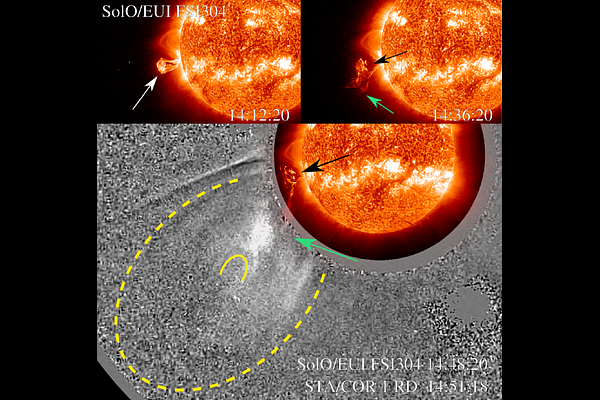Observations of a New Form of Partial Filament Eruption

Observations of a New Form of Partial Filament Eruption
Abril Sahade, Judith Karpen, Spiro Antiochos
AbstractCoronal mass ejections (CMEs) and coronal jets are two of the best-studied forms of solar eruptions, with the same underlying physics. Previous studies have presented partial eruptions producing coronal jets. We report, for the first time, a detailed analysis of three partial eruptions that segmented after the eruption began and produced CMEs. We use multiwavelength observations from the Solar Dynamics Observatory/Atmospheric Imaging Assembly, Solar TErrestrial RElations Observatory, and Solar Orbiter to reconstruct the three-dimensional evolution of the events. The magnetic field extrapolations indicated that the initial filaments were overlaid by pseudostreamer structures, and the splitting occurred after the interaction between the filament-supporting flux and external open field through their null points. The breakout mechanism seems to play a key role in both halting the system and splitting it. However, this initial evolution and consequent splitting into an erupting flux rope above the prominence segment that failed to erupt poses severe challenges to theories of solar eruptions.